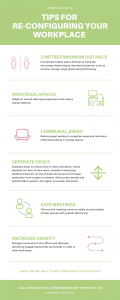Office carpets are on top of the list for many businesses when choosing what kind of flooring the office should have. With brilliant design selections, great acoustic qualities and an abundance of other advantages that check all the right boxes, carpets for offices are always a solid choice for commercial flooring.
Why Office Carpeting Is a Great Choice for Office Spaces
Allowing you more freedom and flexibility in creativity and design than any other flooring material, office carpeting is the perfect pick for any office design project. With new high-velocity dye-technologies, custom carpet manufacturers provide you with the tools to create virtually anything on high-quality material at an appropriate price.
Flooring is such an important part of any design project, encompassing a massive percentage of an office space. Great office carpets enable you to use this space to your advantage by creating a design that defines the brand you are working for, and a carpet for office use is the most practical flooring choice for an everyday work environment due to its ability to absorb and improve sound in an open office layout.
How to Choose the Best Office Carpets
Designing an office space can be a long process, part of which includes picking the perfect carpeting for the office. Choosing the right carpet for your next office-project requires you to assess the workspace and consider the multiple factors that can affect commercial carpet types. Here are a few questions to ask yourself when picking a carpet for office use.
How long does the office carpet need to last?
First things first. Figure out what the office carpet’s life expectancy should be. A basic rule of thumb: the longer the lease, the higher quality of carpet required.
How will the different spaces in the office be used?
Next, determine how much each office area will be used in terms of foot traffic and furniture movement. Private offices and conference rooms may require lower levels of carpet resilience due to moderate use, while corridors and common areas typically receive heavy use. These are important things to consider when choosing the best office carpet for your office.
How well can a commercial office carpet handle stains such as coffee spills?
It’s essential to select different carpeting for different areas, such as cafeterias and corridors, which foster heavy foot traffic and coffee drinkers. When someone inevitably spills their cup of coffee or carries in dirt on their shoes, it’s best to have colour choices that fall in the medium range, which are able to mute out the daily build-up of soil and stains on the office carpets.
What will this carpet look like in an actual office space?
Lighting can impact your office carpets in more ways than one, changing the look and feel of your design completely. Taking office carpet samples on-site allows you to view the carpet under the office lighting, as well as bring your vision to life in the space it will operate. Your client is putting faith in you to design something spectacular, so why not give them a taste of your creative talent by bringing some office carpet samples to show in person.



